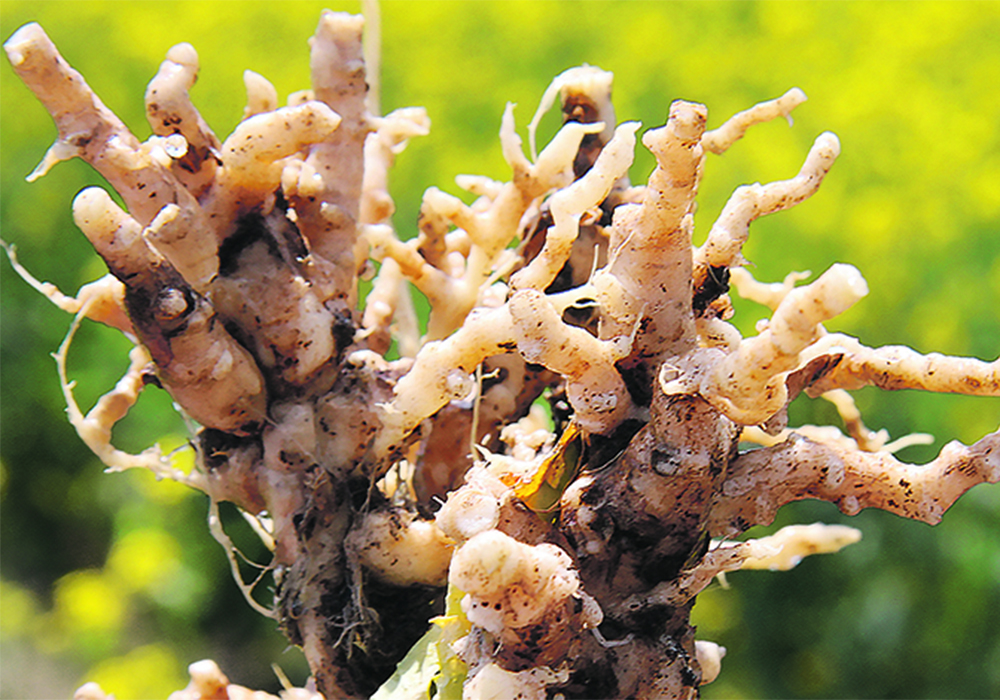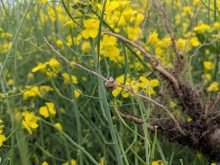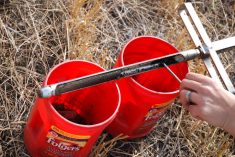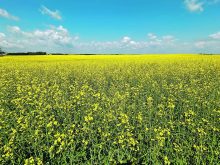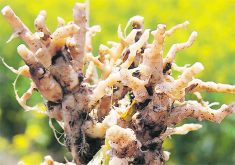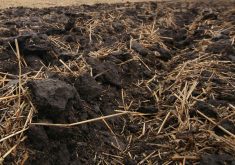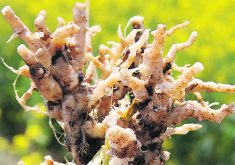Scientists have found that adding silicon to soil can boost resistance to clubroot in canola by up to 46 percent, adding to known benefits for plants such as improving resilience to extreme heat and drought.
“There are significant canola crop losses in the Prairies due to clubroot,” said Nataraj Kav, associate dean of the Faculty of Agricultural, Life and Environmental Sciences at the University of Alberta.
Treatments currently include adding lime to neutralize acidic soils favoured by clubroot, lowering the chance of spore germination and the infection of canola plants. A university study published in 2022 found that spot treating soil with lime lowered the overall severity and occurrence of the disease by 35 to 91 percent.
Read Also

Volunteers help exotic animal farm rebuild
Exotic animal farm loses beloved camel and pony to huge hail storm that gripped the Brooks, Alta. area as a community member starts a fundraiser to help the family recover from the financial and emotional damage.
“But the challenge is that the pathogen is continuously evolving and thereby we need alternative approaches to control it,” said Kav. Although he cautioned the economics need to be worked out, silicon is one of the most abundant elements on the planet, potentially making it a cost-effective remedy.
Besides being expensive for farmers to implement, lime can also result in increased carbon dioxide emissions because of reactions with soil, he said.
“So, by adding silicon, you would potentially mitigate some of those negative greenhouse gas emission effects as well if we were able to take this to the field.”
The findings were outlined in a study recently published in the scientific journal Physiologia Plantarum. It was led by Ananya Sarkar, a PhD candidate in plant science at the university, with the research supervised by Kav.
Although canola resistance to drought and extreme heat because of silicon wasn’t measured in the study, other researchers have found the element can boost such properties in plants, he said.
“This could have multiple beneficial effects to the plant.”
The study was conducted during the last year and a half within the university’s greenhouses, enabling scientists to monitor the effects of silicon on canola in a controlled environment, said Kav.
“This was based on what we were seeing with other pathogens and other diseases, so rather than taking it directly out to the field, we wanted to get some evidence that it had some beneficial effects against clubroot. And now that we have demonstrated that, if we get additional funding, then we can get it to the field and test it in the natural setting.”
The study was conducted by Sarkar in addition to research that seeks to identify micro-organisms that could act as biocontrol agents for clubroot. This wider effort is being funded by a grant of $294,000 from Alberta’s Results Driven Agriculture Research agency.
Silicon seems to work on clubroot by both boosting canola plants in terms of gene expression and inhibiting the pathogen, said Kav.
“We know the plant is also responding in many ways to the silicon that is being applied, but silicon also slightly changes the soil pH, which the pathogen doesn’t like,” he said.
“It has been reported that silicon taken up by plants can actually sometimes form a physical barrier to the pathogen being able to penetrate the roots; still, what we are seeing, I think, is a multi-pronged effort as a result of silicon changing things at the plant level, changing how the pathogen is able to physically get into the plant, and also affecting the pathogen by altering the soil pH.”
A salt called sodium silicate was used in the study, but a commercially mined mineral in Canada called wollastonite, essentially calcium silicate, could be used on canola fields, said Kav.
“And what we want to do next is to see whether some of these naturally present salts of silica can achieve the same protection first in the greenhouse, and secondly, taking it out into the field.”




